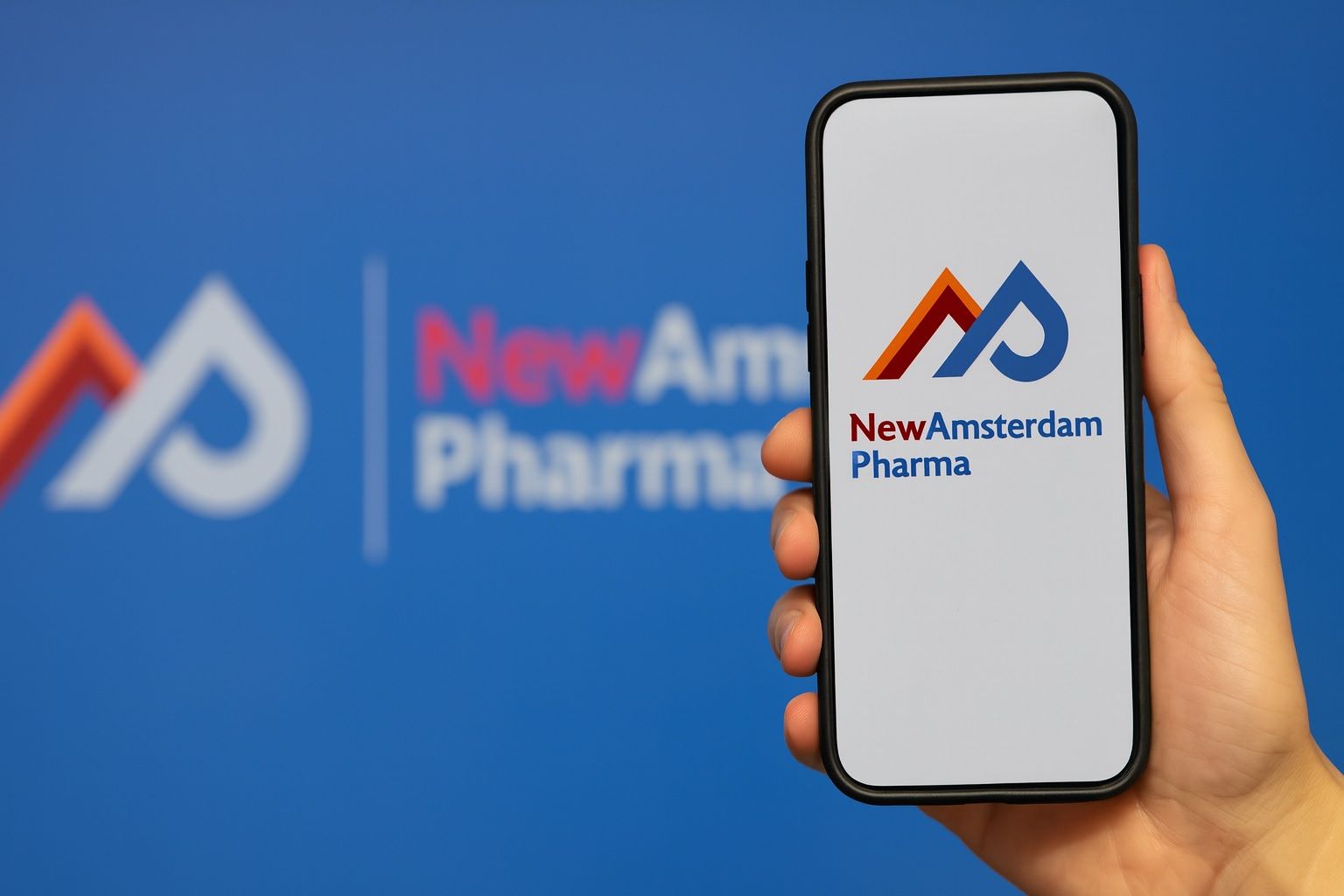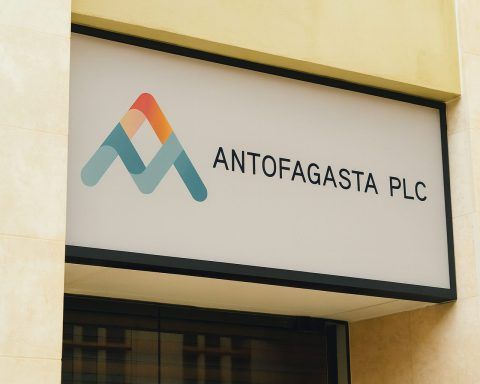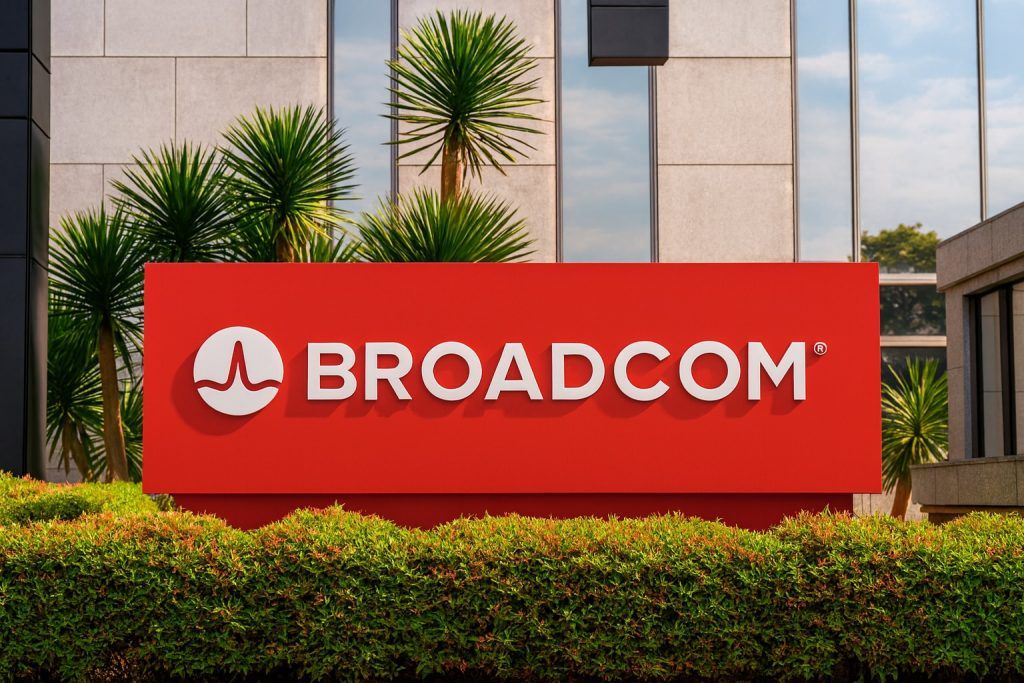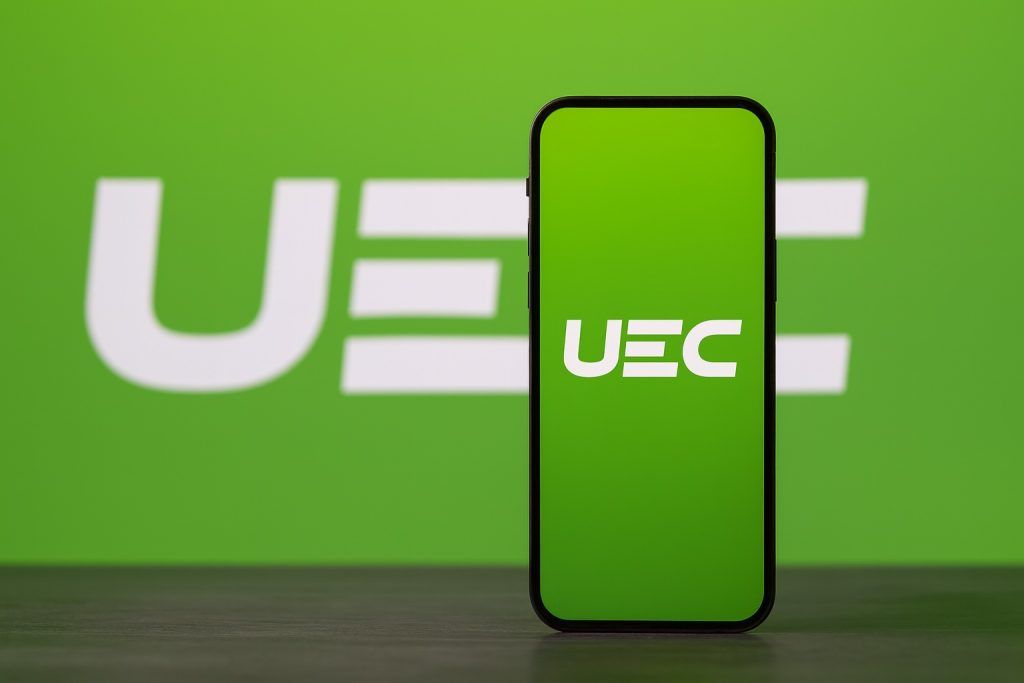- Stock Price Surge: NewAmsterdam Pharma’s stock closed at $37.05 on Oct 10, 2025 (up 12.3% that day) [1], marking a new 52-week high. Shares have climbed roughly 94% over the past six months [2] (about +73% year-on-year [3]), giving the company a market capitalization around $4.2 billion.
- Company Focus: NewAmsterdam is a late-stage biopharmaceutical company (founded 2019–2020) developing oral, non-statin therapies for cardiovascular and metabolic diseases [4]. Its lead candidate is obicetrapib, a once-daily cholesteryl ester transfer protein (CETP) inhibitor aimed at lowering “bad” LDL cholesterol in high-risk patients.
- Leadership & Origins: Co-founded by renowned lipidologist Prof. John Kastelein and venture firm Forbion in 2020 [5], NewAmsterdam brought on Dr. Michael Davidson – a leading cardiologist – as CEO that same year [6]. The company went public on Nasdaq in July 2022, raising $328 million in its debut [7]. Key executives also include CCO B.J. Jones (hired 2023) and a team with experience from Merck, Amgen, AstraZeneca and other top cardiology firms [8].
- Lead Drug & Trials: Obicetrapib has delivered impressive Phase 3 results, cutting LDL cholesterol by ~35–40% as a monotherapy and ~50% in combination with ezetimibe (vs placebo) [9]. Notably, an exploratory analysis showed a 21% reduction in major cardiovascular events (MACE) like heart attacks after just one year on obicetrapib [10] – a surprisingly strong early benefit. The drug also demonstrated an “unexpected” effect on Alzheimer’s biomarkers, significantly lowering a key Alzheimer’s protein (p-tau217) in patients during one trial [11].
- Regulatory Progress: In August 2025 the European Medicines Agency (EMA) accepted obicetrapib’s marketing applications (both alone and with ezetimibe) for review [12]. These filings, submitted via partner Menarini, are backed by three pivotal Phase 3 studies. In the U.S., NewAmsterdam is preparing for regulatory filings – its massive 9,500-patient PREVAIL outcomes trial is fully enrolled and slated to read out in 2026 [13], which is expected to inform FDA approval timing.
- Partnerships:Menarini Group holds European commercialization rights for obicetrapib under a deal worth up to €833 million in milestone payments (plus double-digit sales royalties) [14]. NewAmsterdam is also scaling up manufacturing: it teamed with Piramal Pharma to open a dedicated production suite for obicetrapib tablets, including a fixed-dose combo pill with ezetimibe [15] – a move to ensure supply readiness for launch.
- Financial Health: While still pre-revenue, NewAmsterdam reported $19.1 million in Q2 2025 revenue (likely from licensing milestones) and a net loss of $17.4 million for that quarter [16]. The company is well-capitalized, ending Q2 with about $783.3 million in cash on hand [17] after a $479M equity raise in late 2024. This war chest is expected to fund operations through the PREVAIL trial readout and into a potential drug launch [18]. Full-year 2024 revenue was $45.6M with a net loss of $241.6M [19], reflecting ongoing R&D investment.
- Analyst Sentiment: Wall Street is bullish on NAMS. The stock carries a “Strong Buy” consensus with a $41–$42 average 12-month price target (roughly 13% above current levels) [20]. Several analysts have issued glowing endorsements – H.C. Wainwright initiated coverage calling obicetrapib a “once-in-a-generation” cardiovascular drug and set a $48 price target [21]. Piper Sandler and Wells Fargo each rate it Overweight, and TD Cowen reiterated an Outperform, citing the drug’s broad cardiometabolic potential [22].
Company Overview: History & Mission
NewAmsterdam Pharma Company N.V. is a Netherlands-based biotech (with U.S. operations in Miami) on a mission to “change the landscape of lipid-lowering treatment” for cardiovascular disease [23]. Founded in early 2020, the company sprang from the vision of Prof. John J.P. Kastelein – a world-renowned expert in lipid disorders – and venture capital firm Forbion [24]. They acquired the rights to obicetrapib, a once-abandoned CETP inhibitor, from an Amgen subsidiary in 2020 [25]. Soon after, Dr. Michael Davidson (a leading preventive cardiologist) joined as co-founder and CEO, bringing deep clinical expertise to the leadership team [26].
From inception, NewAmsterdam’s strategic focus has been singular: obicetrapib as a novel therapy to help high-risk patients lower their LDL cholesterol (“bad” cholesterol) beyond what statins alone can achieve [27] [28]. CETP inhibitors raise HDL and lower LDL, but prior drugs in this class had failed due to safety issues and lackluster outcomes. NewAmsterdam aims to succeed where others fell short by using a low-dose, highly selective CETP inhibitor with an improved profile [29]. The company envisions obicetrapib, either alone or co-formulated with ezetimibe, becoming a preferred add-on to statins for the millions with atherosclerotic cardiovascular disease or familial hypercholesterolemia who can’t reach healthy LDL levels today [30].
Growth and milestones: In just a few years, NewAmsterdam has rapidly advanced obicetrapib through four Phase 3 trials enrolling over 12,000 patients [31]. Key development milestones include starting Phase 3 studies (BROADWAY and PREVAIL in late 2021 [32], BROOKLYN in mid-2022 [33]) and signing a major commercial licensing deal with Menarini in 2022 to cover Europe (total deal value >€1 billion) [34]. The company listed on Nasdaq via a SPAC merger in July 2022, raising $328M to fund the Phase 3 program [35]. Further financing in 2023–24 added another ~$669M [36] [37], ensuring a strong balance sheet for ongoing R&D and pre-launch preparations. As CEO Dr. Davidson puts it, NewAmsterdam is “operating from a position of financial strength” as it approaches the commercialization phase [38].
Leadership: NewAmsterdam’s management features veterans of the cardiometabolic field. CEO Michael Davidson, M.D. previously founded multiple cardiology-focused biotechs and has helped develop blockbuster lipid drugs (like statins and fish-oil therapies). John Kastelein, M.D., Ph.D., the Chief Scientific Officer, is a pioneer in cholesterol research who has led trials for cholesterol-lowering agents. The broader team includes alumni of Merck, AstraZeneca, Pfizer, and Biohaven, credited on drugs like Zetia, Crestor, Farxiga and others [39]. This seasoned team underscores the company’s patient-focused, science-driven culture dedicated to tackling “unmet needs in cardiovascular disease” [40].
Recent Developments: Trials, Approvals and Partnerships
Pivotal Trial Successes in Cholesterol Lowering (and Beyond)
Obicetrapib’s Phase 3 trials have delivered robust results, bolstering the drug’s profile as a potential game-changer in cardiology. In late 2024, NewAmsterdam reported positive topline outcomes from three Phase 3 studies: BROADWAY, BROOKLYN, and TANDEM [41]. All three trials met their primary endpoints, showing highly significant LDL cholesterol reductions versus placebo:
- BROADWAY: In 2,530 patients with heart disease or familial hypercholesterolemia on max statins, obicetrapib 10 mg cut LDL by 33% in 12 weeks (p<0.0001) [42]. Mean LDL dropped from ~120 mg/dL to ~80 mg/dL. Importantly, BROADWAY surprised observers by also hinting at cardioprotective benefit much earlier than expected – an exploratory analysis found 21% fewer major adverse cardiac events (MACE) (deaths, heart attacks, strokes, etc.) in the obicetrapib group after one year [43]. This “strong and unexpected” signal of efficacy boosted confidence that obicetrapib can indeed improve patient outcomes, not just lab numbers [44] [45]. “It meaningfully exceeds our expectations and increases our confidence in the drug,” noted one Wall Street analyst after seeing the data [46] [47].
- TANDEM: In 407 patients, the fixed-dose tablet combining obicetrapib + ezetimibe achieved a whopping 49–54% LDL reduction by 12 weeks [48]. This validates NewAmsterdam’s combo-pill strategy: pairing obicetrapib with ezetimibe (another oral cholesterol drug) can halve LDL levels on top of statins, a degree of lowering previously only seen with injectable PCSK9 inhibitors. TANDEM met all its co-primary endpoints without new safety issues [49], supporting plans to market the combo as a convenient one-pill therapy.
- BROOKLYN: In 354 patients with heterozygous familial hypercholesterolemia (a genetic high-cholesterol disorder), obicetrapib again met its goal with a 36% LDL reduction in 12 weeks [50]. These consistent results across trials reinforce that the drug works in diverse populations. Safety in BROOKLYN and the other studies was comparable to placebo – crucial given past CETP inhibitors were plagued by side effects [51]. Notably, obicetrapib did not raise blood pressure or cause liver/kidney issues, problems that derailed earlier drugs in this class [52].
Beyond cholesterol, NewAmsterdam has explored a fascinating secondary benefit: Could lowering LDL also help stave off Alzheimer’s disease? In mid-2025 at the Alzheimer’s Association International Conference, the company unveiled data from a pre-specified Alzheimer’s biomarker analysis in BROADWAY. The results were encouraging: obicetrapib patients showed significantly less accumulation of p-tau217, a key Alzheimer’s marker, over 12 months [53]. In those carrying the high-risk APOE4 gene, p-tau217 levels were 20.5% lower than in the placebo group [54]. Other neurologic biomarkers (like neurofilament light and amyloid ratios) also trended favorably [55]. While this doesn’t prove obicetrapib prevents dementia, it hints at a potential cognitive benefit that “could offer a meaningful advancement for a high-risk patient population”, as CEO Davidson noted [56]. The notion that a cholesterol drug might slow Alzheimer’s progression is speculative but intriguing – and it has contributed to investor excitement around NewAmsterdam’s broader impact.
Regulatory Advances and Upcoming Milestones
With Phase 3 efficacy demonstrated, NewAmsterdam is now racing through the regulatory gauntlet. Its European partner Menarini submitted Marketing Authorization Applications (MAAs) for obicetrapib (both 10 mg alone and the combo pill) in mid-2025, and the EMA validated them for review in August [57]. This validation means the dossiers were accepted and the scientific assessment is underway. The applications are backed by the robust Phase 3 data (BROADWAY, BROOKLYN, TANDEM) which collectively showed LDL reductions of ~35–50% on top of statins [58]. A decision from the EMA could come by late 2026, and if positive, obicetrapib might hit the European market shortly thereafter via Menarini. Under the Menarini deal, NewAmsterdam stands to receive up to €833 million in milestone payments (in addition to $123M already received upfront) and will earn tiered royalties on European sales [59]. This partnership greatly expands NewAmsterdam’s reach and validates the commercial potential of its drug.
In the United States, NewAmsterdam’s regulatory strategy is focused on its PREVAIL trial, a large cardiovascular outcomes study. PREVAIL completed enrollment of over 9,500 patients in April 2024 [60], targeting high-risk cardiac patients on max therapy. This trial will measure whether long-term use of obicetrapib actually reduces the incidence of heart attacks, strokes, and other MACE – the definitive proof U.S. regulators typically want for approval of a cholesterol drug. The company has indicated it plans to file for FDA approval once it has robust outcomes data in hand [61] [62]. Interim hints (like the 21% MACE reduction at one year) are encouraging, but the FDA may prefer waiting for PREVAIL’s final results in 2026. NewAmsterdam’s CEO confirmed they haven’t decided on seeking early FDA review and noted that the FDA has “discouraged” peeking at interim data [63], suggesting the agency wants the full, long-term picture. The firm expects to launch obicetrapib in the U.S. with PREVAIL outcomes data available, to strengthen its case in the market [64].
In the meantime, the company is keeping its pipeline and publications active. Additional analyses from the Phase 3 trials are being presented at scientific conferences and published in top journals (indeed, TANDEM’s results appeared in The Lancet and BROADWAY’s in The New England Journal of Medicine in 2024 [65]). NewAmsterdam is also pursuing a Phase 2 study called VINCENT to assess obicetrapib’s effect on Lipoprotein(a) – another genetic lipid risk factor – both alone and in combination with a PCSK9 inhibitor [66]. Data from VINCENT are expected in late 2025 and could reveal if obicetrapib has beneficial impact on Lp(a), potentially opening a new front in cardiovascular prevention. Additionally, a new Phase 3 trial (RUBENS) will test the obicetrapib/ezetimibe combo in patients with type 2 diabetes [67], recognizing that diabetics often have mixed lipid problems and high residual risk. These efforts underscore that NewAmsterdam is not resting on one trial – it’s building a comprehensive evidence package around its drug.
Partnerships and Commercial Preparations
To maximize its reach, NewAmsterdam has struck strategic partnerships and begun laying groundwork for commercialization:
- Menarini Group (Europe): The 2022 licensing agreement with Italy’s Menarini gives them rights to commercialize obicetrapib in Europe, while NewAmsterdam retains the U.S. and other territories [68]. This was a blockbuster deal for a pre-revenue biotech – worth over €1 billion in potential value – and signaled strong validation of obicetrapib’s promise. Menarini, with its established cardiovascular sales force in the EU, will handle marketing and distribution there. For NewAmsterdam, this de-risks the European launch and provides substantial non-dilutive funding: up to €833M in milestones tied to regulatory approvals and sales targets, plus double-digit royalties [69]. Notably, the EMA filing in 2025 was led by Menarini, illustrating the partnership’s productivity in advancing the drug toward market [70].
- Piramal Pharma (Manufacturing): As obicetrapib nears potential approval, production capacity is critical. In August 2025, NewAmsterdam and Piramal Pharma Solutions announced the opening of a dedicated manufacturing suite at Piramal’s site in Pennsylvania to produce NewAmsterdam’s tablets [71]. This multi-million dollar investment will scale up manufacturing of the obicetrapib-ezetimibe fixed-dose combo and obicetrapib alone, using advanced equipment for large-scale pill production [72]. The facility expansion is expected to create 20+ jobs and ensure supply chain readiness in both the U.S. and abroad. By partnering with Piramal (which also has facilities in India supporting the project), NewAmsterdam is effectively “commercialization-ready” – positioning itself to hit the ground running if approvals come through.
- Scientific Collaborations: NewAmsterdam has engaged with academic and clinical partners as well. Its Phase 3 program involved global investigators, and notably a partnership with the Victorian Heart Institute (Australia) that won a Citeline Award in 2025 for innovative trial design [73]. The company’s CSO, Dr. Kastelein, was honored as “Industry Achiever of the Year” for his leadership in these efforts [74]. Such accolades reflect NewAmsterdam’s growing stature in the cardiology field.
Overall, recent developments paint a picture of a company moving assertively from clinical-stage to pre-commercial stage: trials have largely succeeded, regulators are engaged, manufacturing is scaling, and partners are in place. This momentum has not been lost on investors or analysts, as the next section highlights.
Expert Commentary & Analyst Views
NewAmsterdam Pharma’s progress has attracted significant attention from biotech analysts and industry observers, many of whom see blockbuster potential in obicetrapib if all goes well. Here are some key perspectives:
- Wall Street Analysts: The analyst community is overwhelmingly positive on NAMS. According to a compilation by StockAnalysis, 9 out of 9 analysts rate the stock a “Strong Buy,” with an average 12-month price target of ~$41.89 [75]. Several prominent firms initiated coverage in late 2024 after the Phase 3 data readouts. H.C. Wainwright’s analyst Ed Arce described obicetrapib as a “once-in-a-generation” cardiovascular drug in a December 2024 note [76]. He argued the therapy could be “transformational for millions of patients not at goal on statins,” and set a $48/share price target (about 86% above the stock price at that time) [77] [78]. Analysts at Wells Fargo and Piper Sandler likewise highlighted obicetrapib’s game-changing potential, both assigning overweight/buy ratings in 2025 [79]. TD Cowen has emphasized the drug’s “broad cardiometabolic effects” and maintained an Outperform rating ahead of the crucial outcomes data [80].
- Cardiology & Biotech Experts: The strong LDL-lowering efficacy and early hints of outcome benefits have many experts cautiously optimistic. After the MACE reduction finding in BROADWAY, Jefferies analyst Dennis Ding called the result “strong and unexpected,” noting it came much sooner than typically seen and bodes well for the definitive outcomes trial [81] [82]. William Blair’s analyst Matt Phipps said the one-year MACE drop “meaningfully exceeds our expectations” and “increases our confidence in the drug succeeding in [PREVAIL]” [83] [84]. Such commentary underscores a growing belief on Wall Street that obicetrapib will likely prove its worth in hard outcomes, not just surrogate endpoints.
- Investor Sentiment: The buzz is not limited to analysts – the stock’s performance itself reflects investor optimism. NewAmsterdam’s shares have surged ~95% in half a year [85], and each positive data release has been met with a jump in the stock. For instance, after late-stage trial updates in autumn 2025, NAMS stock popped ~12% in one day, hitting new highs [86]. “The heightened interest is predominantly driven by sentiment around clinical trial progress,” noted Simply Wall St in an October analysis [87] [88]. In other words, investors are buying into the future promise of obicetrapib as a potential blockbuster. There is a sense that NewAmsterdam could be on the cusp of a major medical and commercial breakthrough – something not lost on biotech-focused funds looking for the next big winner in cardiovascular medicine.
- Cautious Voices: Despite the enthusiasm, some experts do urge caution. Simply Wall St’s review pointed out that NewAmsterdam remains unprofitable and that recent share price gains have been “sentiment-driven rather than a material shift in fundamentals.” [89] The core risk, they emphasize, “still centers on the outcome of ongoing pivotal studies” [90] – if PREVAIL or regulatory reviews disappoint, the narrative could change quickly. This balanced viewpoint reminds investors that while the bull case on NAMS is strong, it is not without contingency (a theme we delve into in the Risks section).
In summary, NewAmsterdam Pharma has earned a reputation as an up-and-coming biotech darling in 2025. Seasoned analysts see in obicetrapib the rare opportunity to resurrect a failed drug class and fill a huge unmet need. Many have openly speculated that if outcomes data confirm the benefits, obicetrapib could become standard-of-care second-line therapy on top of statins [91], potentially generating multibillion-dollar sales globally. This optimism is tempered by the recognition that data and execution will ultimately determine success – but for now, NewAmsterdam enjoys a strong vote of confidence from those closely watching the story.
Financial Health & Earnings Highlights
As a clinical-stage company, NewAmsterdam Pharma is not yet profitable, but its financial position is relatively strong for a biotech in this phase. The company has been savvy in securing funding to support its ambitious development program, leaving it with a healthy cash runway and modest revenue from collaborations.
Balance Sheet: NewAmsterdam reported a cash balance of $783.3 million at the end of Q2 2025 [92]. This sizable cash war chest is the result of multiple financings: the Nasdaq listing in 2022 ($328M raised), a secondary offering in 2023 ($190M), and a large public offering in Dec 2024 ($479M) [93] [94]. According to the company, this capital is sufficient to fund operations through at least the readout of the PREVAIL outcomes trial and into the initial launch phase [95]. In other words, barring unexpected setbacks, NewAmsterdam shouldn’t need to raise additional cash until it knows whether obicetrapib will reach the market. The current ratio (current assets to current liabilities) stands above 20 [96], indicating an excellent liquidity position to cover short-term obligations.
Revenues: Though NewAmsterdam has no product sales yet, it has begun to record small amounts of revenue from partnership milestones. In 2024, the company recognized $45.56 million in revenue, a 223% jump from the prior year [97]. This likely includes payments from the Menarini deal (such as milestone for starting EMA filing) and possibly other licensing or R&D collaborations. For the first half of 2025, NewAmsterdam reported $19.1 million in revenue [98], consistent with these collaboration-derived funds. Such revenue helps offset expenses but is not recurring in the way product sales would be.
Earnings and Expenses: NewAmsterdam operates at a net loss, as is typical for a late-stage biotech investing heavily in R&D and pre-commercial activities. The net loss in Q2 2025 was $17.4 million [99], and for full-year 2024 the loss was $241.6 million [100]. These losses have widened year-over-year (2024’s loss was 36% higher than 2023’s [101]) due to the costly Phase 3 trials and build-out for potential product launch. However, the company’s ample cash means it can sustain these planned losses for the next couple of years without liquidity concerns. It’s worth noting that management expects obicetrapib’s development costs to peak with the completion of PREVAIL; after that, spending should shift to marketing and distribution as they (hopefully) commercialize the drug.
Runway & Outlook: Crucially, NewAmsterdam has signaled it has enough cash to reach key milestones without needing to dilute shareholders further in the near term [102]. If obicetrapib secures approval, the company would transition to generating product revenue (though launching a drug will bring its own costs for sales and manufacturing). The existing partnership with Menarini also means NewAmsterdam could start receiving royalty income from Europe relatively soon after an EU approval. Investors often scrutinize small biotechs for cash burn and financing risk – in NewAmsterdam’s case, that risk is mitigated by forward planning and successful fundraising when the stock price was favorable.
In summary, NewAmsterdam’s financial health appears solid for a company at this stage. They have a buffer of cash to get through the most crucial trial readouts and regulatory decisions. While losses remain significant (no surprise without an approved product), the controlled burn rate and inflow of non-dilutive funds (from partnerships) are positive signs. The next big inflection point financially will be if/when obicetrapib is approved – at that point, focus will shift to revenue ramp-up and whether the company might need a commercial partner or additional capital for launch. Until then, the main financial task is to judiciously deploy its resources to achieve regulatory approvals and prepare the market.
Stock Performance & Outlook
NewAmsterdam’s stock (NASDAQ: NAMS) has been on a remarkable run in 2025, reflecting the company’s clinical successes and the high hopes for obicetrapib. After trading around the mid-$10s to low-$20s in 2023–early 2024, NAMS began a steady climb as Phase 3 trial results came in positive. The rally accelerated through 2025: by early October 2025, the stock hit the mid-$30s, a 52-week high [103], and as noted, it closed at $37.05 on October 10, 2025 (up 12% in a single day) [104]. Over the past year NAMS has returned roughly +73%, vastly outperforming the broader biotech sector [105]. Year-to-date gains are even higher – about +94% in six months since April [106]. This momentum has made NewAmsterdam one of the standout biotech stocks of 2025.
What’s driving the surge? In large part, data and anticipation. Each major news event has acted as a catalyst. For instance, when NewAmsterdam announced in July 2024 that BROOKLYN (the HeFH trial) met its endpoint, the stock jumped. Again in November 2024, the disclosure of unexpectedly strong MACE reductions from BROADWAY sent shares up ~33% in one day [107] [108]. Throughout 2025, as the company shared Alzheimer’s biomarker results and progress on the EMA filing, investor optimism grew. By August 2025, NAMS was regularly making new highs in the $30+ range [109]. An analysis by Simply Wall St noted that recent share price appreciation has been sentiment-driven, fueled by optimism around obicetrapib’s late-stage trials and pending approvals [110] [111]. In other words, investors are “pricing in” a good chance of future success – a common dynamic for biotech stocks on the cusp of approval.
Looking ahead, short-term catalysts for the stock include: upcoming trial readouts and regulatory milestones. A few things to watch in late 2025 and early 2026:
- VINCENT Trial Results (Lp(a) study): Data from the Phase 2 VINCENT trial (combining obicetrapib with a PCSK9 inhibitor to target Lp(a)) are expected by end of 2025 [112]. Positive results could broaden the perceived utility of obicetrapib (showing it helps reduce another cardiac risk factor) and generate additional buzz.
- Quarterly Updates: The company’s Q3 2025 earnings call (scheduled for Nov 5, 2025 [113]) and subsequent quarterly reports will be watched for any guidance on regulatory filings (e.g. whether a U.S. NDA submission is imminent or waiting for PREVAIL data) and on commercial readiness. Even though financials are not yet driven by sales, these calls give management a platform to update on timelines and potentially hint at partnership plans for launch, etc.
- Regulatory Decisions: The big one in the medium term is the EMA decision on obicetrapib. If the review goes smoothly, an approval in Europe could arrive in the second half of 2026. The market will likely start reacting to any signals from the EMA (such as advisory committee opinions) earlier that year. A first approval in Europe would be a validating milestone and could bump the stock, although it may be somewhat anticipated by that point. In the U.S., if NewAmsterdam decides to file an NDA based on LDL lowering alone (plus safety and maybe biomarker data), the FDA could potentially rule in late 2026 as well – but it’s quite possible the FDA will require waiting for PREVAIL’s outcomes data (due in 2026). Clarity on the U.S. regulatory path (rolling submission, full submission after PREVAIL, etc.) will be a key focus for investors in 2026.
- Prevail Outcomes Readout: The PREVAIL trial results in 2026 are arguably the most pivotal event in NewAmsterdam’s history. This trial will tell definitively if obicetrapib reduces heart attacks, strokes, and cardiac deaths when added to standard care. Success in PREVAIL (e.g. showing a statistically significant reduction in MACE) could unlock the largest patient population and make obicetrapib a blockbuster therapy. Analysts like Ed Arce of H.C. Wainwright are already bullish, predicting PREVAIL could show a “25%+ MACE benefit” given the early signals [114]. If such outcomes are confirmed, NAMS stock could see another major re-rating upward, as the drug’s commercial potential would be fully validated. On the flip side, if PREVAIL disappoints (e.g. shows only a very small or no reduction in events), the stock would likely suffer a sharp decline – since the bull thesis largely hinges on obicetrapib’s ability to translate LDL lowering into clinical benefit.
Beyond these known catalysts, NewAmsterdam’s longer-term outlook will depend on execution and market reception:
- Commercial Launch: Assuming approvals, how well will NewAmsterdam transition to a commercial-stage company? Investors will monitor early prescription uptake of obicetrapib (in Europe first, then the U.S.) and whether payers embrace it. With millions of patients potentially eligible (those with a history of CVD or familial high cholesterol not at LDL goal), the market is huge. However, competition will also play a role (see Risks below). If obicetrapib launches strongly, NAMS could grow into a multi-billion dollar market cap company. If uptake is slower due to competition or other factors, that could temper long-term stock gains.
- Pipeline Expansion: Currently, NewAmsterdam is essentially a one-product company. Down the road, investors will look for pipeline expansion – either new indications for obicetrapib (e.g. perhaps an Alzheimer’s prevention trial, if the biomarker findings are pursued further) or new drug candidates in cardiometabolic disease. Management’s ability to build a sustainable portfolio will influence whether NewAmsterdam is seen as a potential “platform” company or as a single asset that could be an acquisition target for Big Pharma. Positive indications of pipeline development would be a long-term boon for the stock.
- Market Dynamics: The broader biotech stock environment and interest rate climate can also impact NAMS stock. In 2025, despite some market volatility, NewAmsterdam benefitted from being in a therapeutic area (cardiovascular outcomes) with clear unmet need and large potential payoff. If macroeconomic conditions remain favorable and biotech in general rebounds, NAMS could attract even more generalist investors. Conversely, any downturn in biotech sentiment could weigh on share price in the interim, independent of company-specific news.
Overall, the short-to-mid term outlook for NAMS is optimistic given the strong foundation of trial success and cash in hand. Analyst price targets in the low-to-mid $40s [115] suggest some further upside from current levels, though much of the easy gains (on expectation of trial success) may have already been realized this year. The stock’s future trajectory will likely be event-driven: positive regulatory approvals and especially positive PREVAIL outcomes could propel another leg upward, while any setbacks could trigger sharp downside. For investors, NewAmsterdam represents a classic biotech story – high reward potential if its “big bet” (obicetrapib) becomes a new standard of care, with corresponding risks if things don’t pan out as hoped.
Risks and Uncertainties
Like any emerging biotech, NewAmsterdam Pharma faces significant risks that could impact its stock performance and long-term success. Investors should keep these uncertainties in mind:
- Clinical Trial Risk: The most immediate risk is that the ongoing PREVAIL cardiovascular outcomes trial might not deliver the expected results. All current optimism hinges on obicetrapib ultimately proving it can reduce actual cardiovascular events. While early signs are encouraging, there’s no guarantee PREVAIL will hit its endpoint or show a big enough benefit to satisfy regulators and clinicians. If PREVAIL were to fail (e.g. demonstrate no significant MACE reduction), it would likely be devastating for NewAmsterdam’s prospects — the company has no backup product of similar potential. Even a modest outcome (say <15% risk reduction) could be viewed as underwhelming relative to expectations, potentially limiting uptake or requiring additional trials.
- Regulatory Hurdles:Approval is not assured. The EMA and FDA will scrutinize obicetrapib’s risk-benefit profile. Past CETP inhibitors were scrapped due to safety issues (Pfizer’s torcetrapib, for instance, raised blood pressure and caused off-target harm [116]). Obicetrapib’s trials so far show a clean safety profile, but regulators will look closely at any side effects, especially as exposure times lengthen. It’s possible regulators (particularly the FDA) might delay approval until they see outcomes data, even if LDL lowering is robust, given the history of the drug class. The timing and requirements of U.S. approval remain a bit uncertain – if the FDA mandates waiting for PREVAIL results and perhaps even a second confirmatory outcomes trial, that could push U.S. market entry out by years. Additionally, manufacturing and quality questions could arise during the approval process (the company is a first-time sponsor, which sometimes leads to learning-curve issues with regulators). Any unexpected requests from regulators (additional data, trial extensions, post-marketing studies, etc.) could affect the launch timeline and costs.
- Commercial and Market Adoption Risk: Even with approval in hand, market success is not automatic. Obicetrapib will enter a competitive landscape for lipid-lowering and cardiovascular risk reduction. Standard statin therapy is cheap and effective, and while many patients need extra LDL lowering, doctors have other options: generic ezetimibe, high-intensity statins, and especially PCSK9 inhibitors (like evolocumab and alirocumab). PCSK9 inhibitors are very potent LDL reducers (60%+ reduction) and have proven outcomes benefits, though they are injectables and expensive. By 2025, newer competitors are on the horizon too – an oral PCSK9 inhibitor is in late development [117], and drugs targeting Lipoprotein(a) (another risk factor) are in advanced trials [118]. This means obicetrapib, if launched, will have to carve out its niche: likely positioning as the go-to oral add-on for patients who want more LDL lowering than statins+ezetimibe provide, without injections. It’s a compelling pitch, but uptake will depend on convincing cardiologists of the drug’s benefits (especially outcomes data) and convincing payers of its value. If insurers decide to restrict access (for cost reasons) or require patients to try cheaper options first, that could slow adoption. Moreover, if obicetrapib’s eventual price is high, payers might favor the injectable PCSK9s (which by 2026 may have biosimilars or price competition driving costs down). In short, market penetration could be a challenge if the therapy doesn’t clearly differentiate itself in efficacy, price, or convenience.
- Alzheimer’s Findings – High Hopes, Unproven Benefit: The intriguing Alzheimer’s biomarker data have added to NewAmsterdam’s allure, but this opportunity is highly speculative. Thus far, only biomarkers (like p-tau) have been affected; we have no evidence that obicetrapib improves cognitive outcomes or slows clinical Alzheimer’s disease in patients. Pursuing an Alzheimer’s indication would likely require large, lengthy trials specifically in that population – a huge undertaking with uncertain chance of success. If investors are implicitly baking in some “Alzheimer’s option value” into NAMS stock, that could be premature. There is a risk that further research shows no meaningful cognitive benefit from obicetrapib’s biomarker effects, which would close off that secondary use case. While failure in this area wouldn’t ruin the core cardiometabolic thesis, it could remove a layer of long-term upside that some bullish investors currently envision.
- Financial Risk and Dilution: While NewAmsterdam is well-funded now, drug development is expensive and launching a new drug is costly as well. The company plans to build out its commercial infrastructure, especially in the U.S., which could quickly burn through cash if revenues don’t ramp up fast. There is a possibility that NewAmsterdam might need to raise additional capital – via equity, debt, or partnership – if, for example, approval is delayed or initial sales are slow. Such financings could dilute existing shareholders. Additionally, the stock’s high valuation is predicated on future earnings that are a few years away; if the market environment shifts (e.g., higher interest rates making future profits less valuable in present terms), highly valued pre-revenue stocks like NAMS can be volatile.
- One-Trick Pony Risk: NewAmsterdam is essentially a one-product company at present. This magnifies the impact of any problem with obicetrapib. Unlike larger pharma companies that can absorb a setback of one program, NewAmsterdam’s fate is tied almost entirely to obicetrapib’s success. Until the company diversifies its pipeline or product lineup, it is particularly vulnerable to any single-point failures (clinical, regulatory, manufacturing, etc.). This also means the stock could swing wildly based on rumors or news specific to obicetrapib. Investors must be prepared for high volatility – both to the upside and downside – inherent in such a focused biotech.
- Macroeconomic and Sector Risks: Broader factors could also affect NewAmsterdam. The biotech sector often moves on general sentiment – a downturn in biotech or risk-off investor attitude could drag NAMS down regardless of its individual progress. If interest rates continue to rise, for example, speculative growth stocks can be hit. Likewise, any large-scale healthcare policy changes (e.g., drug pricing reform) could influence the valuation of future drug revenue. While these are not company-specific, they form part of the risk backdrop for any biotech investment.
In summary, NewAmsterdam Pharma offers a compelling story but not a risk-free one. The upside – a first-in-class oral drug that transforms care for cardiovascular disease and perhaps does more – is counterbalanced by substantial execution risks. As one analysis aptly stated, recent optimism “reflects hopes for strong late-stage data” but the company’s “core risk still centers on the outcome of ongoing pivotal studies.” [119] Investors should be aware that the current lofty valuation assumes things will go right. If key assumptions falter (trial results, approvals, market uptake), the stock could retrace significantly. That said, for those bullish on NewAmsterdam, the risks are part of the package of investing in a biotech aiming to tackle some of the world’s leading causes of death. It’s a high-reward, high-risk endeavor – and NewAmsterdam’s journey from here to (hopefully) the clinic and marketplace will be closely watched by both investors and the medical community at large.
Sources: The information in this report is drawn from company releases and reputable financial and industry outlets, including NewAmsterdam’s investor filings and press releases, ts2.tech news roundups, analyst commentary (H.C. Wainwright, Simply Wall St, etc.), and industry reports from FierceBiotech, BioPharma Dive, and others [120] [121] [122] [123]. These sources provide a comprehensive view of NewAmsterdam Pharma’s recent performance, prospects, and challenges as of October 2025. All investors should conduct their own due diligence and consider the evolving news flow beyond this date.
References
1. stockanalysis.com, 2. www.investing.com, 3. www.investing.com, 4. www.globenewswire.com, 5. www.newamsterdampharma.com, 6. www.newamsterdampharma.com, 7. www.newamsterdampharma.com, 8. www.newamsterdampharma.com, 9. www.stocktitan.net, 10. www.globenewswire.com, 11. www.stocktitan.net, 12. www.stocktitan.net, 13. www.stocktitan.net, 14. www.stocktitan.net, 15. www.stocktitan.net, 16. www.stocktitan.net, 17. www.stocktitan.net, 18. www.globenewswire.com, 19. stockanalysis.com, 20. stockanalysis.com, 21. www.streetwisereports.com, 22. www.investing.com, 23. www.newamsterdampharma.com, 24. www.newamsterdampharma.com, 25. www.newamsterdampharma.com, 26. www.newamsterdampharma.com, 27. www.globenewswire.com, 28. www.globenewswire.com, 29. www.globenewswire.com, 30. www.globenewswire.com, 31. www.globenewswire.com, 32. www.newamsterdampharma.com, 33. www.newamsterdampharma.com, 34. www.newamsterdampharma.com, 35. www.newamsterdampharma.com, 36. www.newamsterdampharma.com, 37. www.newamsterdampharma.com, 38. www.globenewswire.com, 39. www.newamsterdampharma.com, 40. www.newamsterdampharma.com, 41. www.globenewswire.com, 42. www.globenewswire.com, 43. www.globenewswire.com, 44. www.biopharmadive.com, 45. www.biopharmadive.com, 46. www.biopharmadive.com, 47. www.biopharmadive.com, 48. www.globenewswire.com, 49. www.globenewswire.com, 50. www.globenewswire.com, 51. www.biopharmadive.com, 52. www.biopharmadive.com, 53. www.stocktitan.net, 54. www.stocktitan.net, 55. www.stocktitan.net, 56. www.sec.gov, 57. www.stocktitan.net, 58. www.stocktitan.net, 59. www.stocktitan.net, 60. www.globenewswire.com, 61. www.biopharmadive.com, 62. www.biopharmadive.com, 63. www.biopharmadive.com, 64. www.biopharmadive.com, 65. www.newamsterdampharma.com, 66. www.globenewswire.com, 67. www.stocktitan.net, 68. www.newamsterdampharma.com, 69. www.stocktitan.net, 70. www.stocktitan.net, 71. www.stocktitan.net, 72. www.stocktitan.net, 73. www.newamsterdampharma.com, 74. www.newamsterdampharma.com, 75. stockanalysis.com, 76. www.streetwisereports.com, 77. www.streetwisereports.com, 78. www.streetwisereports.com, 79. www.investing.com, 80. www.investing.com, 81. www.biopharmadive.com, 82. www.biopharmadive.com, 83. www.biopharmadive.com, 84. www.biopharmadive.com, 85. www.investing.com, 86. stockanalysis.com, 87. simplywall.st, 88. simplywall.st, 89. simplywall.st, 90. simplywall.st, 91. www.streetwisereports.com, 92. www.stocktitan.net, 93. www.newamsterdampharma.com, 94. www.newamsterdampharma.com, 95. www.globenewswire.com, 96. www.investing.com, 97. stockanalysis.com, 98. www.stocktitan.net, 99. www.stocktitan.net, 100. stockanalysis.com, 101. stockanalysis.com, 102. www.globenewswire.com, 103. stockanalysis.com, 104. stockanalysis.com, 105. www.investing.com, 106. www.investing.com, 107. www.biopharmadive.com, 108. www.biopharmadive.com, 109. www.investing.com, 110. simplywall.st, 111. simplywall.st, 112. www.globenewswire.com, 113. stockanalysis.com, 114. www.streetwisereports.com, 115. stockanalysis.com, 116. www.biopharmadive.com, 117. www.biopharmadive.com, 118. www.biopharmadive.com, 119. simplywall.st, 120. www.globenewswire.com, 121. www.investing.com, 122. www.biopharmadive.com, 123. www.streetwisereports.com








